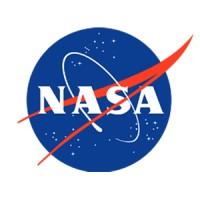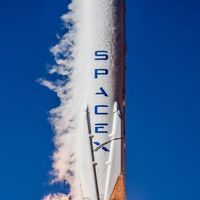NASA's Deorbit Vehicle: Safely Bringing the International Space Station Back to Earth
July 2, 2024, 3:45 pm

Location: United States, Maryland, Greenbelt
Employees: 10001+
Founded date: 1958
Total raised: $25.7B

Location: United States, District of Columbia, Washington
Employees: 5001-10000
Founded date: 2002
Total raised: $7.53B
In a significant move towards ensuring the safe and responsible deorbit of the International Space Station (ISS) after its operational life ends in 2030, NASA has selected SpaceX to develop the U.S. Deorbit Vehicle (USDV). This crucial $843 million contract marks a pivotal step in preparing for the controlled reentry of the ISS over a remote ocean region, thereby avoiding any potential risk to populated areas.
The USDV, once developed, will dock with the ISS and execute a series of maneuvers to facilitate a controlled descent back to Earth. Unlike other missions where NASA procures services, the USDV will be owned and operated by NASA, underscoring the agency's commitment to ensuring a safe and responsible transition in low Earth orbit.
Ken Bowersox, NASA's associate administrator for space operations, emphasized the importance of selecting a U.S. Deorbit Vehicle for the ISS, stating that it will help NASA and its international partners navigate the end of station operations with precision and care. This decision not only supports NASA's plans for future commercial destinations but also allows for the continued utilization of space near Earth for scientific, educational, and technological advancements.
Since its inception in 1998, the ISS has served as a unique scientific platform where crew members conduct experiments across various disciplines of research, including Earth and space science, biology, human physiology, physical sciences, and technology demonstrations that are not feasible on Earth. With over 3,300 experiments conducted in microgravity, the ISS has been instrumental in advancing our understanding of space and fostering collaborations among nations.
The safe deorbit of the ISS is a shared responsibility among five space agencies - CSA, ESA, JAXA, NASA, and Roscosmos. These agencies have collectively operated the ISS, with each agency managing and controlling the hardware it provides. While the United States, Japan, Canada, and ESA have committed to operating the station through 2030, Russia has pledged to continue station operations until at least 2028.
NASA's decision to award SpaceX the contract for the USDV underscores the agency's commitment to ensuring a smooth transition for the ISS as it nears the end of its operational life. The USDV is expected to incorporate elements from SpaceX's Dragon spacecraft, which is currently used for cargo and crew transportation to the ISS.
As we look towards the future of space exploration, the USDV represents a critical component in the broader landscape of commercial space activities. By facilitating the safe deorbit of the ISS, NASA and its partners are paving the way for continued advancements in space science, exploration, and collaboration. The USDV is not just a spacecraft; it is a symbol of our collective commitment to exploring the unknown and pushing the boundaries of human knowledge in the vast expanse of space.
The USDV, once developed, will dock with the ISS and execute a series of maneuvers to facilitate a controlled descent back to Earth. Unlike other missions where NASA procures services, the USDV will be owned and operated by NASA, underscoring the agency's commitment to ensuring a safe and responsible transition in low Earth orbit.
Ken Bowersox, NASA's associate administrator for space operations, emphasized the importance of selecting a U.S. Deorbit Vehicle for the ISS, stating that it will help NASA and its international partners navigate the end of station operations with precision and care. This decision not only supports NASA's plans for future commercial destinations but also allows for the continued utilization of space near Earth for scientific, educational, and technological advancements.
Since its inception in 1998, the ISS has served as a unique scientific platform where crew members conduct experiments across various disciplines of research, including Earth and space science, biology, human physiology, physical sciences, and technology demonstrations that are not feasible on Earth. With over 3,300 experiments conducted in microgravity, the ISS has been instrumental in advancing our understanding of space and fostering collaborations among nations.
The safe deorbit of the ISS is a shared responsibility among five space agencies - CSA, ESA, JAXA, NASA, and Roscosmos. These agencies have collectively operated the ISS, with each agency managing and controlling the hardware it provides. While the United States, Japan, Canada, and ESA have committed to operating the station through 2030, Russia has pledged to continue station operations until at least 2028.
NASA's decision to award SpaceX the contract for the USDV underscores the agency's commitment to ensuring a smooth transition for the ISS as it nears the end of its operational life. The USDV is expected to incorporate elements from SpaceX's Dragon spacecraft, which is currently used for cargo and crew transportation to the ISS.
As we look towards the future of space exploration, the USDV represents a critical component in the broader landscape of commercial space activities. By facilitating the safe deorbit of the ISS, NASA and its partners are paving the way for continued advancements in space science, exploration, and collaboration. The USDV is not just a spacecraft; it is a symbol of our collective commitment to exploring the unknown and pushing the boundaries of human knowledge in the vast expanse of space.